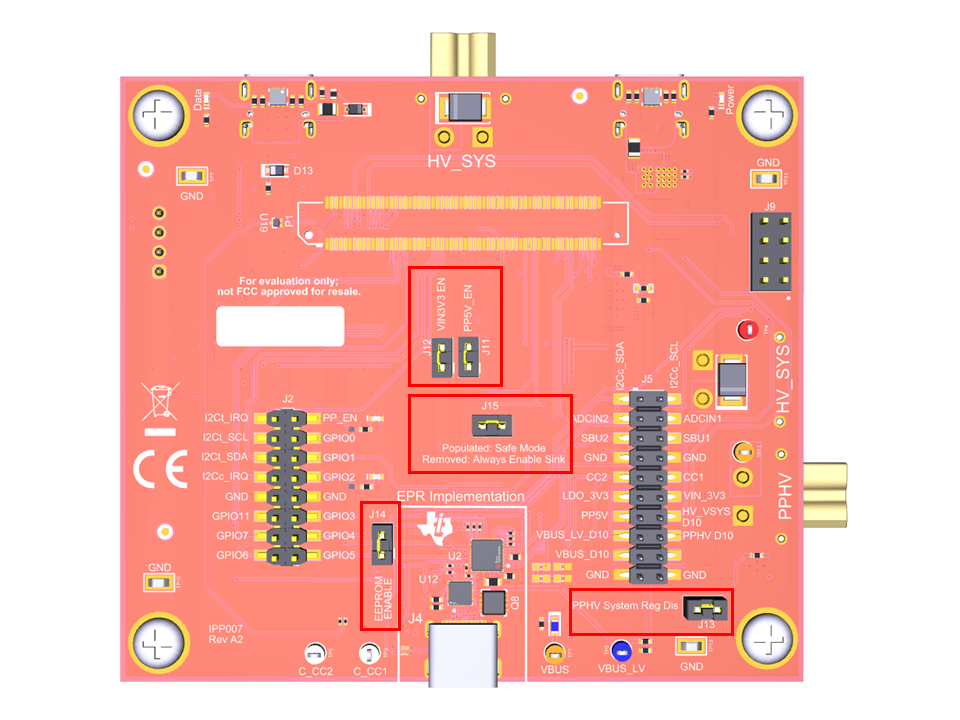SLVUCP8 September 2024 TPS26750
- 1
- Description
- Get Started
- Features
- Applications
- 6
- 1Evaluation Module Overview
- 2Hardware
-
3Software
- 3.1 Software Description
- 3.2 Software Installation
- 3.3 Software Development
- 3.4 Using the Application Customization Tool
- 4Application Specific Use Cases
- 5Hardware Design Files
- 6Additional Information
2.5 Jumper Information

Figure 2-10 Jumper Locations
Table 2-3 Jumpers(2)
| Jumper | Name | Behavior | |
|---|---|---|---|
| J11(1) | VIN_3V3 EN | Populated | The 3.3V LDO (U1) is enabled, providing 3.3V to the VIN_3V3 pin of the TPS26750 |
| Removed | The 3.3V LDO (U1) is disabled, providing 0V to the VIN_3V3 pin of the TPS26750 | ||
| J12(1) | PP5V_EN | Populated | Switch U4 is enabled, connecting the 5V buck converter (U9) to the PP5V pin of the TPS26750 |
| Removed | Switch U4 is disabled, disconnecting the 5V buck converter (U9) from the PP5V pin of the TPS26750 | ||
| J13 | PPHV System Reg Dis | Populated | 5V LDO (U20) is enabled |
| Removed | 5V LDO (U20) is disabled | ||
| J14 | EEPROM ENABLE | Populated | EEPROM is connected to TPS26750 and System MCU (U22) |
| Removed | EEPROM is disconnected from TPS26750 and System MCU (U22) | ||
| J15 | Dead battery configuration | Populated | Safe mode enabled |
| Removed | Always enable sink enabled | ||
(1) Please refer to the following note regarding a silk screen error to avoid confusion
(2) Refer to Pin Strapping to Configure Default Behavior in the
TPS26750 USB
Type-C® and USB PD Controller With Extended Power Range Support data sheet for
more detailed information about Dead Battery Configuration.